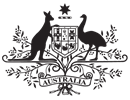THE HON MARK DREYFUS QC MP
Cabinet Secretary
Parliamentary Secretary for Climate Change and Energy Efficiency
Parliamentary Secretary for Industry and Innovation
MEDIA RELEASE
OPPORTUNITIES FOR LOCAL COUNCIL LANDFILLS: A CHANCE TO CUT METHANE POLLUTION, CREATE CLEAN ENERGY AND EARN EXTRA INCOME FOR COMMUNITIES
In recent weeks a number of local governments from around Australia have asked about how the carbon price will apply to pollution from local landfill sites and the potential impact this might have on rates for local communities.
In a number of cases, the potential effect on rates has been over-estimated, misrepresented or misreported.
In determining any impact, some basic facts need to be taken into account:
- Most councils will have no carbon price liability at all from landfills. Only large sites generating more than 25,000 tonnes of carbon dioxide equivalent greenhouse gas pollution a year are covered. The majority of landfills are too small to be covered.
- The carbon price does not apply to pollution from waste deposited in a landfill before 1 July 2012.
- The Government has made rules deeming landfill emissions in 2012/13 to be zero, so council with large landfills will have no obligation in 2012/13.
- Councils can capture methane gas to earn carbon credits' under the Government's Carbon Farming Initiative. Councils can use credits to meet their carbon price liability or generate income by selling them to high-emitting polluters. This income can be re-invested in the local community.
- Best practice rates of gas capture can reduce methane emissions by more than 75% and reduce any carbon price liability to less than $8 per tonne of waste deposited in 2012.
- Capturing enough methane to reduce a council's liability below the 25,000 tonne threshold will mean that the council will not incur the carbon price. Providing an incentive to cut pollution is what the carbon price is designed to do.
- Councils can also use captured methane to generate electricity for the local community and generate another source of income under the Renewable Energy Target. Newcastle City Council currently uses its landfill gas to create enough power to supply 3,000 homes.
- Any potential increase in council rates are factored into the Government's household assistance package.
- Household assistance is, on average, $10.10 per household per week. It is being delivered through tax cuts, increased family payments, pensions and other Government benefits. Some payments have already begun.
- By contrast, any council rate rises associated with a carbon price on landfill pollution are estimated to be as low as 13 cents per household, per week.
- Regarding waste after natural disasters: the Australian Government provides comprehensive disaster recovery assistance and financial support to communities in recovery and clean-up activities. For example, Queensland communities received $6 billion in assistance following Cyclone Yasi. The Government provides assistance on the basis of overall costs, which will include various factors, such as the carbon price, where these are relevant.
The Government is working with councils to provide guidance and information on the implementation of these policies to cut pollution and create clean energy.
As part of this, Federal Parliamentary Secretary for Climate Change and Energy Efficiency Mark Dreyfus has written twice to every council in Australia and provided a landfill factsheet.
Earlier this month, a number of councils attended a two day landfill conference in Canberra run by the Australian Local Government Association and Department of Climate Change and Energy Efficiency. ALGA has also provided information in its weekly newsletter to councils.
The Clean Energy Regulator and the Department of Climate Change and Energy Efficiency have and will continue to hold information sessions for local councils. Councils can also visit the CER website (http://www.cleanenergyregulator.gov.au/) to work out if they are covered by the carbon price.
In addition, the Government has made available $200 million dollars in grants to local councils to improve energy efficiency in council buildings and street lighting to save money on energy costs. The successful recipients will be announced shortly.
More information available at http://www.cleanenergyfuture.gov.au/ and the Regulator's website http://www.cleanenergyregulator.gov.au/.
TUESDAY, 22 MAY 2012



